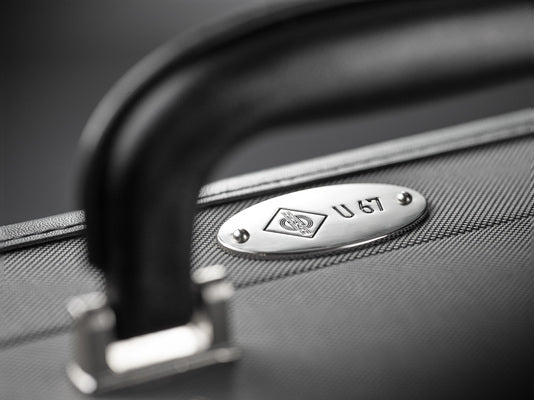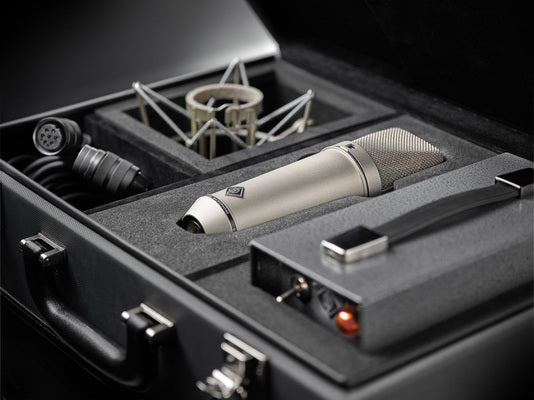

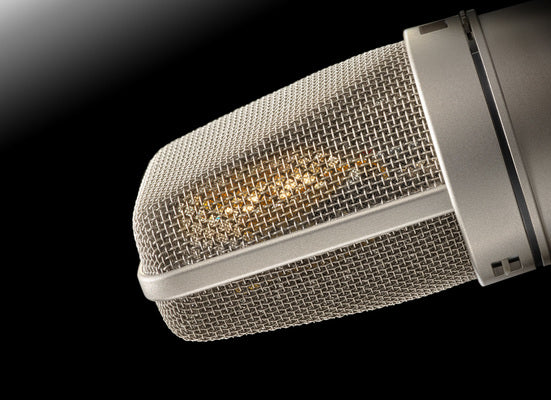





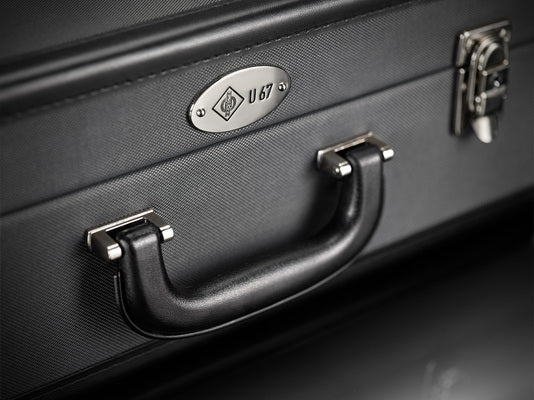

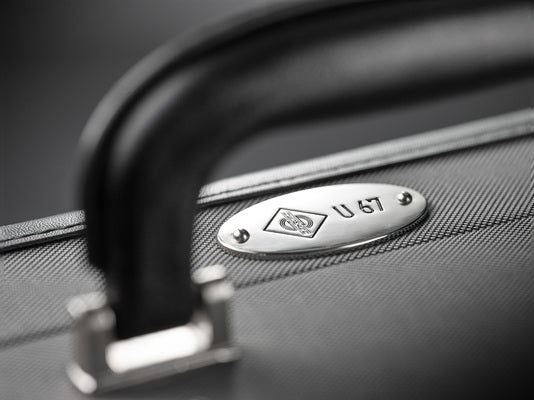


Collapsible content
Description
The Original – Often Imitated, Never Duplicated
Introduced in 1960, the U 67 was the quintessential studio workhorse throughout the formative years of modern music. Today, more than ever, its inimitably smooth sound continues to be in high demand. Now, for the first time in decades, Neumann’s legendary tube microphone is back in production, built to the original specifications.
Return of a Legend
Introduced as the successor to the eminent Neumann U 47, a lesser microphone would have failed. But the U 67 was quickly adopted as the new studio standard, offering many advantages over its predecessor. With three selectable polar patterns and advanced tube circuitry, including low cut and pad switches, the Neumann U 67 was well-equipped for virtually any recording task. It still is: To this day, many top level engineers would choose the U 67 as their “desert island” microphone for its extraordinary versatility and unmatched sound quality.
Neumann Engineering at Its Best
The U 67 was the first microphone equipped with the famous K 67 capsule, which has since become associated with “the Neumann sound” and continues to be used in its successor, the U 87 A. No less important is the U 67’s masterful tube circuit featuring a clever pre-emphasis/de-emphasis scheme to minimize tube hiss. The U 67 was also the first microphone to address modern recording techniques such as close miking. Its switchable low cut filter compensates for the proximity effect occurring at short recording distances. Using its preattenuation, the U 67 can handle high sound pressure levels of up to 124 dB without distortion (and much more if you don’t mind a bit of “tube grit”).
As timeless as its sound and technical design is its outer appearance. The U 67’s cone-shaped body and the tapered headgrille have since become iconic for the Neumann brand; the same elegant design would grace its solid state successor, the U 87, for the next 50+ years.
Applications
The U 67 is a universal studio microphone suitable for all applications. Its smooth top-end with a subtle tube shimmer makes the U 67 an outstanding vocal microphone. Due to its essentially linear response in three polar patterns – omni, cardioid, and figure-8 – the U 67 is also a very versatile microphone for all kinds of instruments such as strings, woodwinds, brass, piano, drums, acoustic and electric guitar, bass guitar and upright bass.
History Repeating
Sonically, the current reissue is identical to the U 67 made from 1960–1971. It uses the same capsule and electronic design. Key parts, such as the BV 12 output transformer, are meticulously reproduced according to original documentation. EF86 tubes are carefully selected for optimal characteristics and lowest noise in a dedicated measurement facility. The power supply was redesigned to meet today’s strict safety requirements and to accommodate the slightly higher filament current of newer premium grade tubes. The new power supply NU 67 V is fully compatible with older U 67 microphones.
- Reissue of the legendary Neumann U 67
- Superb vocal microphone for male and female singers
- Versatile microphone for all kinds of instruments
- Made to original specifications using archived documentation
- New power supply NU 67 V automatically adapts to the local mains voltage
- Handmade and hand soldered in Germany
Data and Diagrams
| Acoustical operating principle | Pressure gradient transducer |
|---|---|
| Directional Pattern | Omnidirectional, cardioid, figure-8 |
| Frequency Range | 20 Hz ... 20 kHz |
| Sensitivity at 1 kHz into 1 kohm | 15/24/16 mV/Pa ± 1 dB (Omni/cardioid/8) |
| Rated Impedance | 200 ohms |
| Rated load impedance | 1 kohms |
| Equivalent noise level, CCIR¹⁾ | 32/28/31 dB (Omni/cardioid/8) |
| Equivalent noise level, A-weighted¹⁾ | 21/17/20 dB-A (Omni/cardioid/8) |
| Maximum SPL for THD 0.5%²⁾ | 114 dB (cardioid) |
| Maximum SPL for THD 0.5% with preattenuation²⁾ | 124 dB |
| Signal-to-noise ratio, CCIR (re. 94 dB SPL)¹⁾ | 62/66/63 dB (Omni/cardioid/8) |
| Signal-to-noise ratio, A-weighted (re. 94 dB SPL)¹⁾ | 73/77/74 dB (Omni/cardioid/8) |
| Maximum output voltage | -9.8 dBu |
| Supply voltage (P48, IEC 61938) | 48 V ± 4 V |
| Current consumption (P48, IEC 61938) | 3.5 mA |
| Matching connector | Microphone: spec. 7pin, Power Supply: XLR 3 F |
| Weight | 560 g |
| Diameter | 56 mm |
| Length | 200 mm |
Acoustical operating principle Pressure gradient transducer Directional Pattern Cardioid Frequency Range 20 Hz ... 20 kHz Sensitivity at 1 kHz into 1 kohm 11 mV/Pa Rated Impedance 50 ohms Rated load impedance 1000 ohms Equivalent noise level, CCIR 1 21 dB Equivalent noise level, A-weighted 2 12 dB-A Maximum SPL for THD 0.5% 3 144 dB Signal-to-noise ratio, CCIR (re. 94 dB SPL) 4 73 dB Signal-to-noise ratio, A-weighted (re. 94 dB SPL) 5 82 dB Maximum output voltage 13 dBu Supply voltage (P48, IEC 61938) 48 V ± 4 V Current consumption (P48, IEC 61938) 3.5 mA Matching connector XLR 3 F Weight approx. 210 g Diameter 52 mm Length 116 mm 1) according to IEC 60268-1; CCIR-weighting acccording to CCIR 468-3, quasi peak; A-weighting according to IEC 61672-1, RMS
2) measured as equivalent el. input signal











